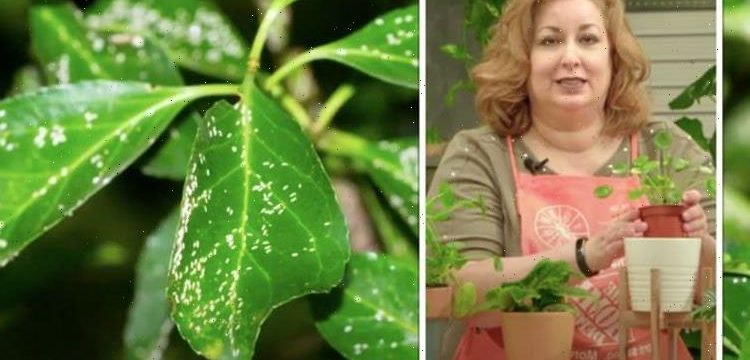Chinese money plant: Expert shares plant care advice
We use your sign-up to provide content in ways you’ve consented to and to improve our understanding of you. This may include adverts from us and 3rd parties based on our understanding. You can unsubscribe at any time. More info
Chinese money plants, also known as Pilea peperomioides or Pileas, are a species of flowering plant. The popular houseplants are native to the Yunnan and Sichuan provinces in southern China. Chinese money plants are also known as “missionary plants”, the “UFO plant”, the “pancake plant” and the “friendship plant”.
The plants are easy to propagate and look after which is why they have become so common in our homes.
The plant first came to the UK at the start of the 20th century and is a great choice for new gardeners as they’re related to succulents.
Like other houseplants, Chinese money plants can be infected with pests and fungus.
If you’re not sure what a pest infestation looks like, The Home Depot’s indoor houseplant expert Eileen has shared her advice.


Eileen said an “important” tip when watering your plants is to check them for pests and other problems.
She said: “An important tip whenever you water your plants is to check it.
“Look over the leaves, look under the leaves.
“You’re going to be checking for any kind of pests.
DON’T MISS
Houseplants that can help to reduce dust in your home [INSIGHT]
Houseplants: How plants could boost your mental health this winter [UPDATE]
Devil’s Ivy: ‘Less is more’ when watering houseplant [ANALYSIS]
“You want to check for aphids, spider mites, scale, mealy bugs and possibly even a fungus.”
One of the things to look out for is small insects themselves and “dots”.
She continued: “Some things to look for are possibly little insects.
“You may find white little dots or sometimes what looks like spider webs.
Looking for a new home, or just fancy a look? Add your postcode below or visit InYourArea
“Sometimes with a fungus you may see fungus gnats coming up and those are little flies – little black flies or little white flies.
“If you do find a plant that has some sort of an infestation you immediately want to quarantine the plant and treat it for the appropriate conditions.
“You also want to check the plants that it was close to make sure that they’ve not been crossed contaminated or infected.”
When you’ve figured out what’s causing the problem, you will need to make sure you use the correct products.

Some products will tackle specific problems while others will oust them all.
She continued: “Once you’ve identified what is attacking your plant you want to make sure you use the proper products.
“Some products will cover a multitude of situations.
“Some fungicides may also have insecticide materials in them so you’ll be able to protect the plant multiple ways.”
Source: Read Full Article
